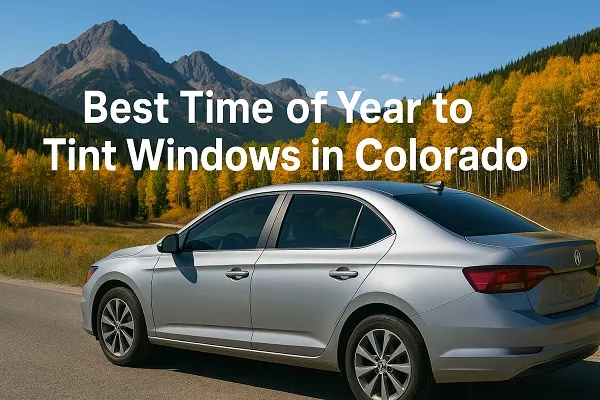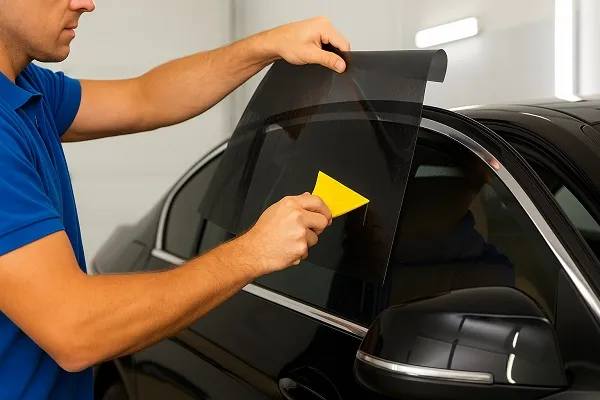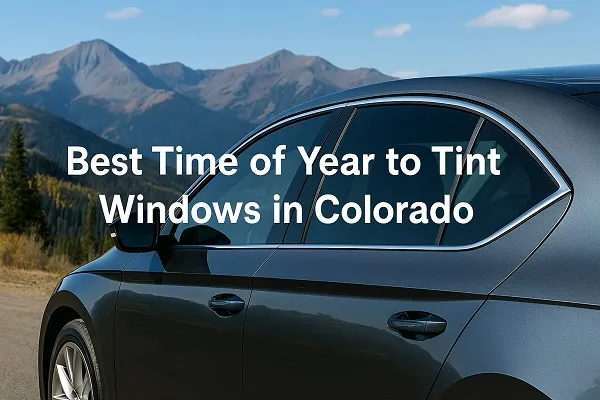The best time of year to tint windows in Colorado depends on a variety of factors including weather conditions, temperature stability, and UV exposure. Whether you’re tinting your car, home, or office, the timing can affect everything from the quality of the installation to how well the tint performs and adheres.
Window tinting offers numerous benefits—UV protection, glare reduction, privacy, and interior preservation—but getting it done at the wrong time of year can lead to bubbling, poor curing, or extended drying times. In Colorado, with its four distinct seasons and rapidly changing weather, choosing the ideal time becomes even more critical.
Why Timing Matters for Window Tinting
Temperature and Humidity Play a Role
Tint films adhere best when applied in moderate, stable temperatures. In Colorado, this means avoiding extreme heat in the summer and bitter cold in the winter. Tint adhesives are sensitive to moisture and temperature swings, and both can interfere with proper bonding.
- Cold temperatures slow down the curing process.
- Excessive heat can make film application challenging and lead to bubbles.
- Humidity impacts how the film dries and cures, though Colorado’s climate is typically low in humidity.
Curing Time and Weather Conditions
After tint is applied, it needs time to dry and cure fully. This process can take anywhere from a few days to a couple of weeks, depending on the conditions.
Inconsistent weather, especially spring snow or fall rain, can prolong drying and affect clarity. Window tinting professionals often adjust scheduling based on short-term weather forecasts to avoid unexpected delays or damage during curing.
Best Seasons for Tinting Windows in Colorado

Spring (March–May)
Spring can be a hit or miss when it comes to window tinting in Colorado. Early spring still experiences wintery conditions, while late spring can offer more favorable weather.
Pros:
- Increasing daylight helps with installation visibility.
- Moderate temperatures in late spring are good for curing.
- Less demand than summer, meaning faster appointment availability.
Cons:
- Early spring snow and cold snaps.
- Sudden rain showers and fluctuating temps.
Best Time Within Spring:
Late April through May is ideal if spring is your only option.
Summer (June–August)
Summer is the most popular season for window tinting in Colorado—and with good reason. The long, sunny days provide optimal conditions for fast curing and strong adhesion.
Pros:
- Plenty of UV exposure, which speeds up curing.
- Ideal temperatures for film application.
- Great time to prepare for intense summer sun and heat.
Cons:
- High demand means longer wait times and limited appointment slots.
- Excessive heat, especially in July, can make installations tricky.
Best Time Within Summer:
Early June or late August to avoid peak heat and crowded schedules.
Fall (September–November)
Fall is arguably the best time of year to tint windows in Colorado. The temperatures are mild, the sun is still out, and demand begins to taper off after the summer rush.
Pros:
- Cool but stable temperatures ideal for curing.
- Less competition for appointments.
- UV exposure is still strong enough to facilitate drying.
Cons:
- Shorter daylight hours.
- Risk of early snow or temperature drops late in the season.
Best Time Within Fall:
Mid-September through October is optimal for both auto and residential/commercial window tinting.
Winter (December–February)
Winter is generally not recommended for window tinting unless absolutely necessary. The cold air, snow, and reduced UV exposure create a less-than-ideal environment.
Pros:
- Lowest demand means flexible scheduling.
- Ideal if you need tinting done for privacy or energy efficiency during winter.
Cons:
- Curing takes significantly longer.
- Cold temperatures can make film brittle.
- Potential for installation issues due to dry indoor heating environments.
Best Time Within Winter:
Late February, if a warm spell hits and indoor conditions are controlled.
Factors to Consider When Choosing Tinting Time

Type of Tinting Project
- Auto Window Tinting: Most popular in late spring to summer, but best done in early fall for ideal conditions.
- Home or Commercial Tinting: Fall is perfect, especially if you’re looking to reduce winter heating bills with solar control film.
Indoor vs. Outdoor Tinting
Many residential and commercial tint jobs can be done indoors, which makes timing more flexible. Auto tinting, however, often requires open garage space or warm weather to avoid fogging and condensation.
Film Type and Material
Some films are more sensitive to temperature than others. For example:
- Ceramic films are less prone to bubbling and perform well year-round.
- Dyed films may require more curing time in cold weather.
Installer Availability
If you want a seasoned professional, it’s better to book during spring or fall. Peak summer months may mean longer waits and higher prices.
Benefits of Tinting in Colorado’s Climate
Regardless of timing, window tinting in Colorado offers year-round advantages:
- UV Protection: High-altitude UV exposure is stronger—tinting protects skin and interiors.
- Energy Efficiency: Keeps your home cooler in summer, warmer in winter.
- Privacy: Ideal for both cars and homes near busy streets.
- Glare Reduction: Particularly helpful during winter when sun reflects off snow.
Tips for Scheduling Your Tint Appointment
- Monitor weather forecasts: Aim for a week of stable, mild weather.
- Avoid extremes: Skip days over 95°F or under 40°F unless indoor facilities are available.
- Ask your installer: Professionals in Colorado are familiar with seasonal challenges and may offer flexible rescheduling policies.
- Plan ahead: Fall and late spring appointments tend to fill quickly with people aiming for perfect timing.
Fall stands out as the best season overall to tint windows in Colorado due to its combination of mild temperatures, consistent weather, and lower demand. However, if you’re strategic about scheduling and work with a knowledgeable installer, spring and summer can also yield excellent results. Avoiding the harshest winter months and peak summer heat ensures that your tint job looks great, lasts longer, and performs well year-round in Colorado’s dynamic climate.

